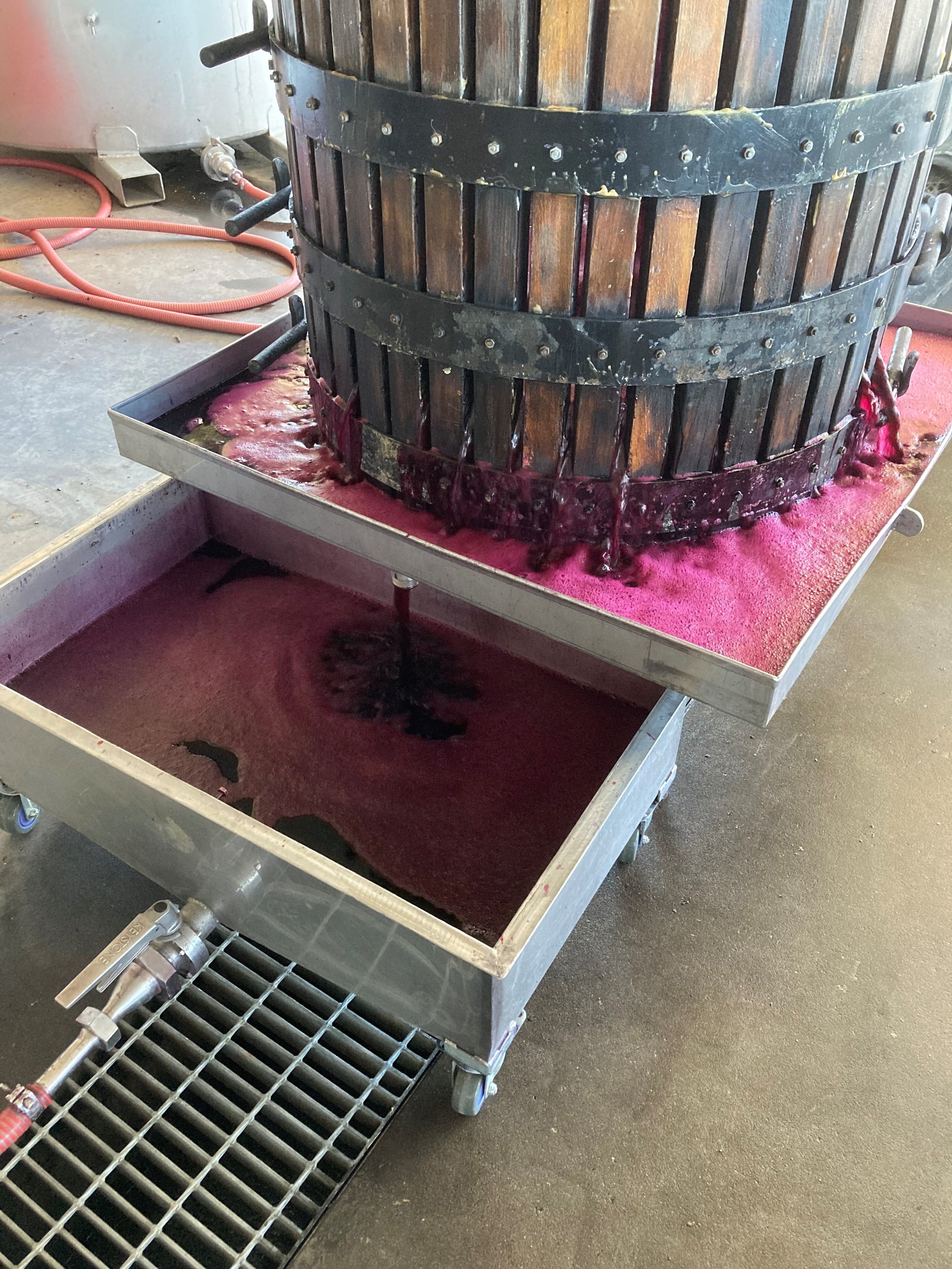Hayes Family Wines - Pressing - Time to Extract the Goodness from those Grapes
Pressing Our Shiraz
Pressing
As you may have heard me say, or have read, winemaking is essentially a natural process. Grapes are picked, often destemmed, fermented, pressed and then either bottled or barrelled for later bottling. But like all simple things, there are always complexities or variations.
Historically pressing grapes was done by hand or by people stomping grapes. Clean feet and lots of energy and enthusiasm is required.
Today most wineries use a mechanical press of some sort. These come in two basic varieties, batch presses and continuous presses. A wine press is a key element in the actual winemaking process. The press extracts the juice from the crushed grapes. Often the most intense juice comes from these pressings.
Pressed Grapes, Intense, High Tannin Goodness
Types of Presses
Today most wineries use a mechanical press of some sort. These come in two basic varieties, batch presses and continuous presses.
A batch press can handle up to 1-5 tonnes with an appropriate team on the job. Most small to medium-sized wineries use one or more batch presses. At Hayes Family Wines, we employ two 700kg batch presses (in our case basket presses). Grapes are loaded in one “batch” at a time. We apply pressure for more than 12 hours. Different presses can handle different quantities of grapes.
Continuous presses on the other hand are generally motorized and fed a continuous stream of grapes. Because of this automation, continuous presses can press up to 100 metric tonnes per hour. As you might have guessed, a continuous press is geared more for a winery pressing thousands of tonnes of grapes at harvest.
Batch Presses
Given our size at Hayes Family Wines (and our inability to even fill most continuous presses) we use small batch presses. Batch presses come in two general types, a Basket Press and a Bladder Press.
Basket Press
The earliest known mechanical press is the basket press. Still used today at many small wineries (and some not so small), this well known type of press is still a reliable way to go.
A basket press has a ring of vertical staves with gaps between. When pressure is applied, either manually or more commonly in wineries via hydraulics, the pressed juice escapes and is captured in a tray. Grapes are loaded in the top. Then a plate is lowered down over the grapes to slowly apply pressure to the grapes.
Bladder Press
Like its name might suggest, the bladder press uses an inflatable rotating bladder that inflates and crushes the grapes along the side of a cylinder. Very efficient and often used in and around the valley.
Why Choose One over an Other?
Ultimately like everything in wine, there are so many factors, including budget, volume of ferments, style of wines, tannin management etc. For us, a small basket press, but there are so many options. We find that our wines have a softness to them even in their youth that bely the high levels of tannin naturally present in our wines. We believe that the traditional Barossa Basket Press is a key contributor in our style.






